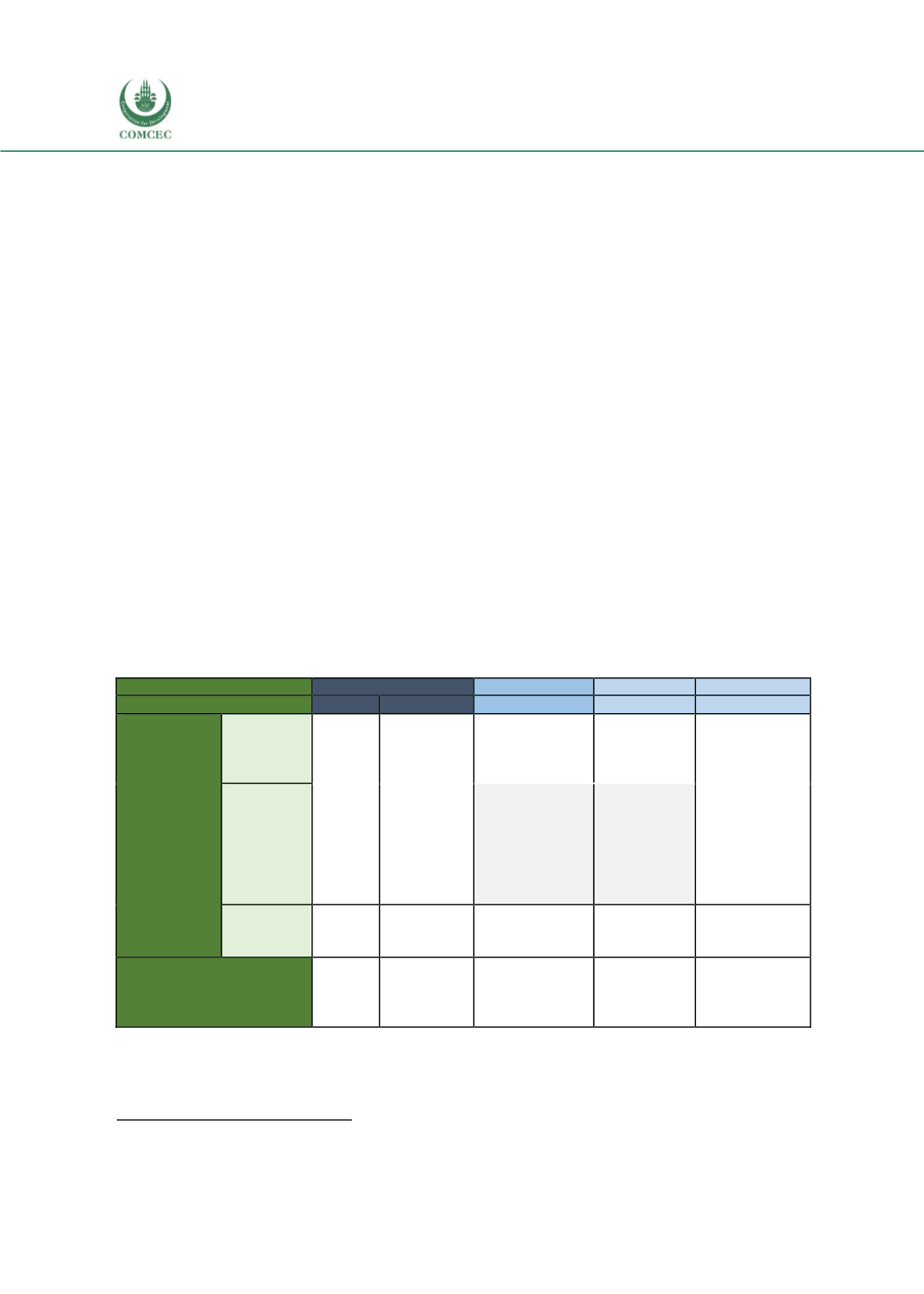

Increasing the Resilience of the Food Systems
In Islamic States in Face of Future Food Crises
124
5.
Assessing Food Security in the OIC
5.1.
Case Study Takeaways
These in-depth case studies provide valuable data for the collective OIC region across five core
parameters: 1) the government's apparatus and emphasis on food security; 2) government
monitoring; 3) adaptation; 4) mitigation activities; and 5) resilience building. While OIC
countries cannot be expected to fully emulate developed countries in a short space of time,
approaches can be tailored to each of the four distinct groups identified earlier in the report.
Government Apparatus and Emphasis on Food Security
In more advanced countries, the Department of Agriculture had full responsibility for food
security, with a separate entity almost always overseeing food safety.
Dedicated agencies have played a more significant role in OIC countries, however. In Indonesia,
a separate entity was housed under the Ministry of Agriculture , with a distinct focus on
addressing each of the pillars of food security. In Nigeria, a dedicated agency had the important
task of coordinating food aid and ensuring access to water.
While in non-OIC benchmarks, food production and availability were ensured primarily by
private sector companies, the ownership of food companies was observed in OIC countries. PT
Bulog—which imports and guarantees the availability of rice in Indonesia—was notable, as
were meat and vegetable companies owned by the Oman Food Investment Company.
Table 65: Government Entities Responsible for Food Security
Category
Developed Countries
OIC – A1
OIC – A2
OIC – B1
Country
U.S.
Ireland
Indonesia
Niger
Oman
Main
Departments
Responsible
Availability
USDA
Department
of
Agriculture,
Food &
Marine
Ministry of
Agriculture
Department
of
Agriculture
& Livestock
Ministry of
Agriculture
and Fisheries
(supported by
several
Ministries,
including those
of Distribution
and
Commerce)
Access
Supported by
Food Security
Agency (BKP)
and PT Bulog
(government-
owned food
company)
Supported
by HC3N
program
(Prime
Minister’s
Office)
Safety
FDA,
USDA
Food Safety
Authority
National Agency
of Drug and
Food Control
Ministry of
Public Health
Ministry of
Health
Government spending on
Food System stability, $
billions
506
$867
billion
(4% of
GDP)
$3.1 billion
(0.8% of
GDP)
$3.8 billion
(0.4% of GDP)
$270 million
(3.3% of
GDP)
$161.3 million
(0.19%)
507
Source: DinarStandard synthesis and analysis
506
Based on case studies presented in Chapter 5, withWorld Bankopen database used for current GDP
507
Based on 2014 data
















